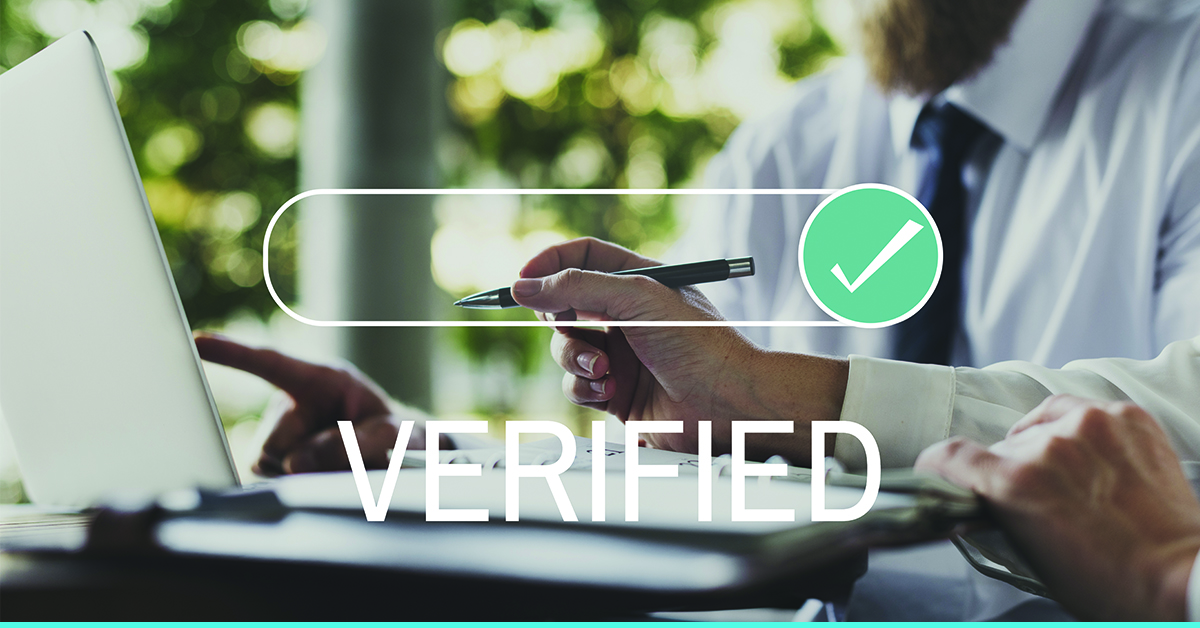If the Covid-19 pandemic has taught us anything, it’s that not all heroes wear capes. Frontline healthcare workers have proven themselves to be heroes in the fight against the Covid-19 virus and even before the pandemic, healthcare was ranked as one of the most respectable and trusted occupations. But what makes this profession so trustworthy?
Patients consistently choose to place their trust in their healthcare providers, thanks to a trusted system of checks and balances. This system ensures that their healthcare providers have the necessary credentials required to offer adequate healthcare. Healthcare providers who wish to work at a healthcare facility are required to undergo a comprehensive vetting process called provider credentialing.
Continue reading to learn more about the provider credentialing process and steps in provider credentialing used by healthcare facilities to ensure that all their providers have the qualifications required to carry out their duties responsibly.
What is the Provider Credentialing Process?
While many people think of the patient and healthcare provider’s relationship to be a one-to-one relationship, several hospital operative functions not only contribute to but also share the responsibility of ensuring their patients’ safety. This is done via a rigorous verification of the providers’ skills, licenses, qualifications, and history, including their professional and educational background, known as the provider credentialing process.
All providers looking to gain practicing privileges must first undergo the provider credentialing process to assure healthcare organizations that they are competent enough to provide top-quality and safe healthcare services at their facility.
Provider credentialing is quite a time-consuming procedure that can take anywhere between two to three months, so make sure to start the process way before you intend on beginning practice. Even the slightest mistake in the provider credentialing process can lead to significant delays, which can keep healthcare providers from doing what they do best: provide quality care.
Why is the Credentialing Process in Healthcare Important?
Before we delve into the provider credentialing process in detail and its steps, let’s first discuss why the credentialing process in healthcare is so important?
The credentialing process in healthcare validates a provider’s credentials that reflect extremely well on their resume. It enables patients to trust their healthcare provider knowing that they are a qualified professional who is a part of a reputable medical association.
Apart from validating that a healthcare provider meets the necessary standards required to deliver high-quality clinical care, provider credentialing is a crucial process needed to process insurance claims. The credentialing process allows providers to enroll within a wide range of insurers’ networks. If healthcare providers fail to undergo the credentialing process, these insurance payers may refuse to reimburse them for the services they have rendered.
Apart from this, credentialing isn’t a one-time procedure. It’s an ongoing process that requires providers to be re-credentialed every few years. This ensures that providers continue to remain fit within the insurer’s network and are still capable of doing the job. In turn, this reduces the risk of medical errors and enhances the quality of healthcare services provided to patients.
Steps in Provider Credentialing
As we discussed, provider credentialing can be quite a tedious and cumbersome process. However, breaking down the procedure into a few quick steps can significantly simplify the procedure and ensure that your providers receive their clinical privileges timely.
Here are the steps to follow in provider credentialing:
- Identifying the Documents Needed
Before you can start the verification process in provider credentialing, you must first identify the documents you will need from the provider to verify their credentials. Each insurance payer has different requirements and requires different documents for credentialing a provider. These include documents such as:
- Proof of licensure
- Insurance proof
- Driver’s license
- Social Security card
- Personal information such as email address, street address, phone number, ethnicity, gender, citizenship, etc.
- Career history
- Copy of National Provider Identifier (NPI#) documentation and confirmation letter
- Education and residency information
- UPON number
- Federal Tax ID number
- History of past malpractice claims
- Permanent Resident Card, Green Card or visa status for non-US citizens
- Residency diploma
- Current CME (CME activity for the past three years)
- ACLS/BLS certification
- DEA certificate
Make sure that you have all the necessary documentation required by each insurer your organization works with. Even a single missing document can delay the procedure by weeks or even months.
- Prioritize Insurance Payers
Since you will have to submit individual applications to each insurer you want to enroll with, it may serve better to prioritize the insurers you want to submit your applications to first. If a large portion of your medical claims is billed to a single insurer, submit the credentialing application to that insurer first. Some insurers even provide a shorter application for providers who are already credentialed within that same state so it’s important to stay up to date with each insurer’s regulations.
- Ensure Accuracy
As we mentioned earlier, the slightest of mistakes in your credentialing application such as incorrect phone numbers or dates of employment can lead to delays of up to months or worse, and even can face rejections. This is why taking out the time to ensure complete accuracy of the information you are providing to the insurer can prove to be significantly beneficial.
Before submitting your application, make sure to conduct your abbreviated verification process by which you can verify your licensing, certifications, and educational history. Failure to accurately report any history of past malpractice claims can lead to the disqualification of your application.
- Complete the CAQH
Except for Medicare and Medicaid, many insurers require healthcare facilities to apply for credentialing through the Council for Affordable Quality Healthcare (CAQH). When submitting your application, most insurance companies will ask you for your CAQH number ID as a part of your application. To register your CAQH ProView Profile, visit the CAQH ProView website and take out at least one to two hours of your time to fill out the required information on the website.
Once you’ve set up your CAQH ProView Profile and gathered all the documents and information, you are now ready to submit your credentialing application to the insurer. Insurers will access your CAQH to verify your demographic and professional information. An incomplete, inaccurate, or unattested CAQH ProView Profile can lead to your credentialing application getting rejected.
- Wait for Approval
Once you’ve submitted your application, the next step in the provider credentialing process is to wait for the insurance company to verify your credentials. This can be quite a long process and can take anywhere from 60 to 150 days to complete. Consider following up with the insurance company if you don’t receive a response from them within 120 days. Consistently following up with your credentialing application is crucial to expedite the credentialing process.
See Also: The Importance Of Provider Credentials In Medical Billing
The Bottom Line
While the provider credentialing process may seem like an insignificant paperwork task, the fact of the matter is that it is a crucial process required to cultivate trust within the industry. It not only ensures that practitioners are equipped with the necessary skills and knowledge to do the job but also serves to protect your organization from potential lawsuits.
Unfortunately, provider credentialing in healthcare is a complex and expensive paper-based process that can take up much of your organization’s resources. The good news is that Precision Hub can help. Our state-of-the-art credentialing services are designed to help you simplify the provider credentialing process and get credentialed with all your payers much faster.





